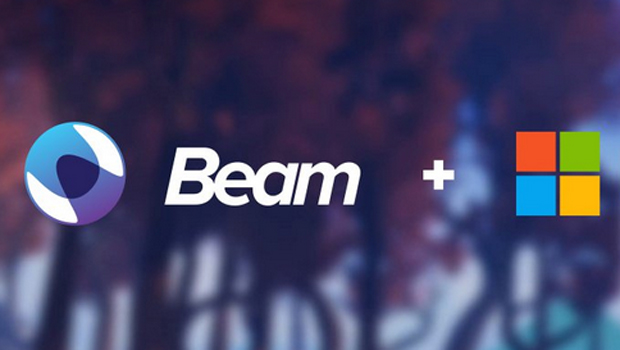When Microsoft launched Beam livestreaming capabilities on Xbox One and, later, to Windows 10 Creators Update, it was an exciting time. Gamers could now stream their gameplay to thousands of Xboxers and Windows 10 users around the world. In a sense, Beam has given us a glimpse of what gaming will be like in the future – where you won’t need heavy local system resources to engage in gameplay with countless other gamers on the Internet.
Strictly speaking, Beam livestreaming on Xbox One and Windows 10 PCs isn’t the same as cloud gaming. It’s about the ability to broadcast in near real-time; it’s a streaming platform, just like the Amazon-owned Twitch. And that’s what makes it worth a second look, because participants in the gaming experience can see the action almost as it is happening.
The reason we’re talking about Beam in the context of cloud gaming is that one of the biggest challenges to cloud gaming is latency. If players cannot engage in real-time experiences, there’s really no point in multi-player games. Of course, there are cloud-based games that you can play on services like GeForce NOW from NVIDIA, but that’s limited to SHIELD devices.
There are several others that offer gaming on demand, such as LiquidSky (available in Beta 2.0; soon to be launched officially), PlayStation Now and so on. Quite a big list, actually, but true cloud gaming on a massive multiplayer scale is difficult to achieve for several reasons, some of these being:
- developing a high availability architecture,
- managing multiple client socket sessions and
- the server side business logic required for virtual rooms and lobbies where users interact
Companies like AppWarp are addressing this issue directly, as are newer entrants like Amazon. The online retailer, through its Amazon Web Services unit, now offers the Lumberyard game engine that is integrated with AWS, Twitch and Curse. It’s essentially an end-to-end gaming solution for developers to build, host and deploy their cloud games on AWS infrastructure.
While Beam on Xbox and Windows 10 is seen as merely a broadcasting platform, the sub-second stream delay they have achieved is a significant step forward. In the future, there will be powerful gaming platforms where games are served off the cloud, and gamers can engage in massive multiplayer action in near real-time. Even Beam has a roadmap to launch team-based interactive games.
It’s still early days for cloud gaming, and right now the ability to engage in multiplayer, real-time action is quite limited. That’s going to change, and the major cloud service providers like Microsoft, Amazon and Google will have a definite edge over smaller companies because of their global cloud datacenter footprints.
And what it boils down to is essentially having the infrastructure capabilities to allow unlimited concurrently connected users (CCUs), yet provide sub-second latency so that real-time cloud gaming can be engaged in, in exactly that way – in real-time.
The other big hurdle is Internet connectivity and speed. This is an external problem not inherent to cloud gaming itself, but is currently being seen as the biggest bottleneck to rapid cloud gaming adoption by users. Data is getting cheaper, but the large amounts of data bandwidth required for cloud gaming can be prohibitive in many markets.
And those are essentially the key challenges for cloud gaming companies, but the rewards are massive. The global gaming market was expected to reach $99.6 billion in 2016, and Technavio’s analysts forecast the global gaming market to grow at a CAGR of 6.42% during the period 2016-2020.
While cloud gaming might not be the future of all things gaming, it is going to form a significant part of the gaming industry over time. With parallel growth being seen in areas like virtual reality (VR/AR/MR), livestreaming capabilities on Beam and other platforms, cloud computing growth and so on, cloud gaming should see significant growth over the next decade.
Hey, would you do us a favor? If you think it’s worth a few seconds, please like our Facebook page and follow us on Twitter. It would mean a lot to us. Thank you.



